Category: Beauty
A blog of simple, natural beauty – by ‘Farmlady’
“Those who contemplate the beauty of
the earth find reserves of
strength that will endure as long
as life lasts.”
~Rachel Carson
SOURCE: FarmLady HERE
Meaning, purpose and separation
Many articles on this site argue that the making of meaning is central to being human, and therefore nurturing meaning-making, and positive meaning-full action, should be central to education and parenting. But what of the broader picture? W. T. Stace said;
The problem of evil assumes the existence of a world-purpose. What, we are really asking, is the purpose of suffering? It seems purposeless. Our question of the why of evil assumes the view that the world has a purpose, and what we want to know is how suffering fits into and advances this purpose. The modern view is that suffering has no purpose because nothing that happens has any purpose: the world is run by causes, not by purposes. W. T. Stace – Religion and the Modern Mind
Suffering has purpose because through it we gain insight and come to realization. Its just that meaninglessness is the meaning that is more popular. The answer to that is to construct greater meaning, meaning based on eternal verities rathern than fleeting fashions and false realities.
Not for the first time I stumbled across an example of the phenomenon about which the great John Hull has railed. Hull’s theme is disgust at how ‘mammon’ has stolen the language and concepts of the spiritual life. Consider this;
A World of Meaningful Experiences
Humans have evolved to value increasingly complex meaning in their lives, an evolution that is partly reflected in our consumption of goods and services. This evolution has proceeded from a primary focus on function and economic value to the addition of progressively more intricate offerings like status and emotional value, and now meaning. Worldwide, consumers are increasingly seeking products and services that connect with them through meaning, that jive with their sense of how the world is, or should be. Although this trend is prevalent in the West, we see increasing evidence of it globally. Just as tribes, traditions, and objects brought order and “rightness” to people in previous centuries, a company and its offerings may now play that role as well by solidifying a relationship at the deepest possible point in the human psyche and personality. It’s a potent place for a company to be.
Companies have been both lauded and derided in the past for creating lifestyles, particularly consumer lifestyles. We’re not convinced they’ve actually done so. Instead, we think companies have become adept at making a connection from products and services to emerging lifestyles and trends. They may have embraced these new directions, and perhaps amplified them, but not actually created them. Similarly, we’re not arguing that companies are in a position to create meaning in people’s lives, rather that they are in a position to connect to meanings people already recognize and want.
Companies can address people’s growing desire for meaning by intentionally designing cohesive experiences based on a specific meaning and expressed cohesively through products, services, and other consumer touch points.
Experiences with Global Appeal
What types of meaningful experiences do people value? In the course of helping companies develop products and services that suit their markets, every year we interview over 100,000 individuals from countries and cultures around the world. In these interviews, we’ve found commonalities among the meanings people feel strongly about, whether we’re studying the adoption of new software in Poland or the purchase of toothbrushes in Florida.
We’ve compiled a list of these meanings, but it is far from exhaustive. We’ve found potentially dozens of types of meaningful experiences and at least as many possible ways to characterize them. What we concentrate on here are 15 of the meanings that emerge most frequently in these interviews and appear to be universal among people’s values. While the relative importance of these meaningful experiences might vary and their interpretation could differ slightly, all cultures seem to recognize their significance. This is good news for businesses, because it means that there is a certain constancy among human needs that transcends the distinctions of culture and language.
(Since none of these meaningful experiences is more or less important than any other, we’ve presented them in alphabetical order.)
1. Accomplishment— Achieving goals and making something of oneself; a sense of satisfaction that can result from productivity, focus, talent, or status. American Express has long benefited from transmitting a hint of this meaning to its card holders by establishing itself as a credit card intended for those who are successful. Nike relies on the essence of this meaning for many in its “Just Do It” campaign.
2. Beauty— The appreciation of qualities that give pleasure to the senses or spirit. Of course beauty is in the eye of the beholder and thus highly subjective, but our desire for it is ubiquitous. We aspire to beauty in all that surrounds us, from architecture and fine furnishing to clothing and cars. Enormous industries thrive on the promise of beauty stemming from shinier hair, whiter teeth, and clearer skin. Beauty can also be more than mere appearance. For some, it is a sense that something is created “correctly” or efficiently with an elegance of purpose and use. Companies such as Bang & Olufsen audio equipment and Jaguar automobiles distinguish themselves through the beauty of their design.
3. Creation— The sense of having produced something new and original, and in so doing, to have made a lasting contribution. Besides driving our species to propagate, we enjoy this experience through our hobbies, the way we decorate our home, in telling our stories, and in anything else that reflects our personal choices. Creation is what makes “customizable” seem like a desirable attribute, rather than more work for the buyer, for example, making the salad bar a pleasure rather than a chore.
4. Community— A sense of unity with others around us and a general connection with other human beings. Religious communities, unions, fraternities, clubs, and sewing circles are all expressions of a desire for belonging. The promise and delivery of community underlies the offerings of several successful organizations including NASCAR with its centralizing focus on car racing and leagues of loyal fans that follow the race circuit, Harley-Davidson motorcycles and their Harley Owners Group (HOG), and Jimmy Buffet with his dedicated Parrotheads. These businesses attract and support user communities who embody specific values tied to their products and services.
5. Duty— The willing application of oneself to a responsibility. The military in any country counts on the power of this meaning, as do most employers. Duty can also relate to responsibilities to oneself or family, such as reading the daily paper to stay abreast of the news. Commercially, anything regarded as “good for you,” including vitamins, medications, Cross-Your-Heart bras, and cushioned insoles relays some sense of duty and the satisfaction it brings.
6. Enlightenment— Clear understanding through logic or inspiration. This experience is not limited to those who meditate and fast, it is a core expectation of offerings from Fox News, which promises “fair and balanced” reporting, the Wall Street Journal, which many consider the ultimate authority for business news, and the Sierra Club, which provides perspective on environmental threats and conservation.
7. Freedom— The sense of living without unwanted constraints. This experience often plays tug-of-war with the desire for security; more of one tends to decrease the other. Nevertheless, freedom is enticing, whether it’s freedom from dictators, or in the case of Google, the freedom to quickly search the Web learning and interacting with millions of people and resources.
8. Harmony— The balanced and pleasing relationship of parts to a whole, whether in nature, society, or an individual. When we seek a work/life balance, we are in pursuit of harmony. Likewise, when we shop at Target for a toaster that matches our mixer, we are in pursuit of harmony. Much of the aesthetic appeal of design depends on our personal desire for the visual experience of harmony.
9. Justice— The assurance of equitable and unbiased treatment. This is the sense of fairness and equality that underlies our concept of “everyman” or Average Joe. It helps explain the immense popularity of the Taurus and the Camry, the ranch house, Levi’s jeans, and white cotton T-shirts—all products with a simple, impartial appeal to a very broad audience.
10. Oneness— A sense of unity with everything around us. It is what some seek from the practice of spirituality and what others expect from a good tequila. Although we don’t normally think of them as a company, the Grateful Dead sustained its revenues for decades building an experience that connected with its fans’ desire for oneness. Similarly, organizations that connects their members into nature or a broader sense of the world, like the Monterey Bay Aquarium or the United Nations, are capable of evoking a meaning of oneness.
11. Redemption— Atonement or deliverance from past failure or decline. Though this might seem to stem from negative experiences, the impact of the redemptive experience is highly positive. Like community and enlightenment, redemption has a basis in religion, but it also attracts customers to Weight Watchers, Bliss spas, and the grocery store candy aisle. Any sensation that delivers us from a less desirable condition to a more pleasing another one can be redemptive.
12. Security— The freedom from worry about loss. This experience has been a cornerstone of civilization but in the U.S. in particular, acquired increased meaning and relevance after 9/11. On the commercial side, the desire for this experience created the insurance business, and it continues to sell a wide range of products from automatic rifles to Depends undergarments to credit cards that offer protection from identity theft.
13. Truth— A commitment to honesty and integrity. This experience plays an important role in most personal relationships, but it also is a key component of companies like Whole Foods, Volkswagen, and Newman’s Own, all of which portray themselves as simple, upright, and candid.
14. Validation— The recognition of oneself as a valued individual worthy of respect. Every externally branded piece of clothing counts on the attraction of this meaningful experience whether it’s Ralph Lauren Polo or Old Navy, as does Mercedes-Benz, the Four Seasons hotel chain, and any other brand with status identification as a core value.
15. Wonder— Awe in the presence of a creation beyond one’s understanding. While this might sound mystical and unattainable, consider the wonder that Las Vegas hotels create simply through plaster and lights. Disney has been a master of this experience for decades, and technology companies routinely evoke awe as they enable their users to do what seemed impossible the year before.
This brilliant list is written to enable designers and manufacturers to make things more satisfying and eventually get a better ROI (return on investment). Is this a disaster for all that is good, true and beautiful – or is it a great step forward?
Ultimately making meaning is always a journey toward the realization of oneness. When we arrive there is only now but maybe have goods that are imbued with the qualities of the spirit is no bad thing?
A slide version of the SunWALK holistic education model – on what it is to be fully and positively human
A slide version of the SunWALK holistic education model – on what it is to be fully and positively human:
.
Thoughts on art No. 1: The Turner Prize, The Stuckists and what do we want from artists.
“Art is worth the consciousness that it raises.”
The Turner prize stinks say the Stuckists.
The Turner prize is great say others.
What do they, and we, want from our artists and their art?
‘Thoughts on art No. 1’ – in a nutshell:
Just what do we expect from an artist? What do we have the right to expect? Are we asking too much?
In a world of increasing billions of communications isn’t an artist that informs you just a little bit more about
a) being human,
b) his/her being human
c) or being human in the world with others worth his/her salt?
This is another way of saying that art is worth the consciousness that it raises.
For example two artists help me experience space differently and think about it differently are Rachel Whiteread and Antony Gormley


Of course the two artists I chose are somewhere between very good and great. But even if they were students showing just single pieces of their work it wouldn’t make any difference.
The gain was in and around – ‘space – being human – memory’ – i.e. a deepening and widening of consciousness.
Whiteread and Gormley – are both important to me for reasons other than ‘space – being human – memory‘ but just for extending, deeping, enjoying the resonances of that area, “Thanks – many, many thanks – I’m so glad I came across you.”
Beautiful summary of Perennial Philosophy
Students of Perennial Philosophy, the core mystical teachings that are the same in all religions and forgotten by many or most adherents, might agree that two verses from the Hindu Bhagavad Gita constitute a simple, beautiful and perfect summary of the Perennial Philosophy teachings;
“Like two birds of golden plumage, inseparable companions, the
individual self and the immortal Self are perched on the branches of the
selfsame tree. The former tastes of the sweet and bitter fruits of the
tree; the latter, tasting of neither, calmly observes.
“The individual self, deluded by forgetfulness of his identity with the
divine Self, bewildered by his ego, grieves and is sad. But when he
recognizes the worshipful Lord as his own true Self, and beholds his
glory, he grieves no more.”2
-0-
Compare these verses with the contemporary re-presentation of the Perennial Philosophy in The New Earth or Stillness Speaks by Eckhart Tolle – different language and cultural clothing but the same message!
Inevitably the ethical implication of Perennial Philosophy is ‘ The Golden Rule –
EXAMPLES:-
BAHA’I:
“Ascribe not to any soul that which thou wouldst not have ascribed to thee, and say not that which thou doest not.” Baha’u’llah.
BUDDHISM:
If you want others to be happy, practice compassion. If you want to be happy, practice compassion – Dalai Lama
CHRISTIAN:
And as ye would that men should do to you, do ye also to them likewise.
Luke 10:25-28
ISLAM:
In his Last Sermon, the Prophet Muhammad cautioned believers: “Hurt no one so that no one may hurt you.”
TAOISM:
“Regard your neighbor’s gain as your own gain, and your neighbor’s loss as your own loss.” T’ai Shang Kan Ying P’ien.
see HERE for more examples.
Enjoy these – and dive deep!
Bhagavad Gita Chanted in English HERE
Text of the Bhagavad Gita in English HERE
.
NB Try listening to the chanting whilst reading the text – wonderful! – transporting!
Commentary ‘The Battlefield of the Mind‘ on the Bhagavad Gita, by Swami Nirmalananda Giri, HERE
NB Please use the SEARCH on this site to find more about Perennial Philosophy and all of the other subjects mentioned.
Art, Nature and realizing our own Beauty
To look upon beauty, in art or in nature, is to realize our own beauty.

The relative context of perspective – or new perspective from re-contextualizing?
Art teaches. Nature teaches.
Buddhism is compassion. When we realize our own beauty the boundaries of our compassion expand.
—–0—–
All postings to this site relate to the central model in the
PhD. Summaries are HERE
SEE also Learning Motivation for Success
Compassion is love shaped into an embrace.
Getting our I, WE & IT voices Balanced – inspired by Ken Wilber
Getting our I, WE & IT Voices Balanced
Are your voices in a twist? We each have 3 God-given voices to sing different kinds of songs. Imagine if one voice dominates & consequently the other 2 ‘shrivel’ to almost nothing. Where would we be?
Answer – where we and our world are now. This is how Ken Wilber explains our situation.
All great wisdom traditions (and Perennial Philosophy) used to believe in the Great Chain of Being which taught that reality was a rich tapestry of levels starting with matter:
spirit
soul
mind
body
matter
Wilber suggests reality now is best understood as a Great Nest of Being – like a set of ‘Russian Dolls’ – same levels – ‘matter-body-mind-soul-spirit’ but like an onion. (All are forms of spirit?)
He speaks of three historical periods: 1) before the Enlightenment = pre-modernism; 2) after the Enlightenment = modernism; 3) recently = post-modernism.
What did the good side of modernism give us? The good side of modernism = we were able to develop separately the 3 voices of I. WE & IT – I, (Art) WE (Morality) and IT (Science)
I = the subjective voice that we express in the arts (Beauty – and subjective truth)
WE = the moral voice that we express in the Humanities including religion (Goodness)
IT = the objective voice that we express in the Sciences (Objective Truth)
In pre-modern times I, WE and IT were not separate voices. Before the Enlightenment the Church decided everything. It forced Galileo to recant the truth of what he saw scientifically through his telescope. The Church insisted the sun went around the earth. It also decided what was and wasn’t good, and what was and wasn’t beautiful in the arts.
After the Enlightenment modernism gave us three voices developing separately I, WE and IT which were also three separate ways of knowing which I prefer to express thus:
‘I knowing’ = the subjective voice in the Arts (Beauty as pleasing patterns en-formed) -Creativity
‘WE knowing’ = the moral voice in the Humanities inc. religion (Goodness as fellow-feeling) -Caring
‘IT knowing’ = the objective voice in the Sciences (Truth as sorting, measuring, replicating) -Criticality
The bad side of modernism = the domination by the IT voice (‘Scientism’) to create ‘Flatland’. That is the ITness of science has become so powerful that it has caused the other two voices, more or less, to become invalid. This has been called the dis-enchantment of the modern world.
Therefore:
Pre-modernism = science, the humanities & the arts couldn’t develop separate to ‘Church’
Modernism = all three could develop separately (includes separation of Church and State)
Post-modernism means different things to different people a) a reaction against modernism, b) a counter-balance to (Flatland) modernism or c) a continuation of modernism
More narrowly postmodernism = the idea that there is no ‘truth’ only interpretations, and all interpretations are socially constructed (by elites to exploit groups e.g. women or colonies)
Important in pm = ‘there is no grand narrative’ that binds – such as the Christian story. My answer = ‘yes there is – being human in the world, with others, seeking truth, beauty, goodness and justice = the perennial grand narrative’.
The bad side of modernism = the empiricism of science has like a cuckoo forced out ‘I knowing’ and ‘WE knowing’. Inappropriately applying the scientific way of knowing (empiricism) to other areas of life is called scientism . (Creates ‘Flatland’)
Fundamentalism is, in part, derived by rejection of modernism – especially separation of state & religion. Ultimately it = the unwillingness to let the I, WE & IT voices grow separately.
The good side of post-modernism – it teaches us that
1 Reality is not always pre-given, but in some significant ways is a construction, an interpretation. The belief that reality is simply given, is referred to as ‘the myth of the given’.
2 Meaning is context-dependent, and contexts are boundless.
3 Cognition must therefore privilege no single perspective. (SEE Wilber p121)
Conclusion: We still validate science (the empirical and the rational), though we teach it poorly, but we don’t validate contemplation. Contemplation can also be thought of as heart-knowing – which is inspiration that follows meditation, especially the experience of at-one-ment/egolessness.
Our interior self is a flow of ‘heart-mind’. – separating heart and mind has been a disaster that has invalidated, or diminished, the feminine principle in men and women. (Heart-mind is an ancient idea ‘xin’ or ‘hsin’ in Chinese).
I, WE and IT ways need each other. If a person gets inspiration from contemplation (as Einstein did) s/he needs to order it or check it with IT knowing and WE knowing. Science needs I knowing and WE knowing as well. The Humanities need I knowing as well as IT knowing. Art needs WE & IT knowing.
Organized religion has suffered because it couldn’t stay clear on I, WE and IT knowing. It has made a comeback via the arts and ‘pick and mix’ spirituality. Its special domain, like art is I knowing – + WE knowing as inspired by what it sees as the revealed word of God.
Action needed = The world (especially the religions, governments & parents) need to nurture the I, WE and IT voices to achieve balance and concord. Unity, peace & development depend on validating objective truth and knowing, subjective truth and knowing and the moral wisdom that lies at the heart of all of the great traditions. The call is to the balancing of these three ‘voices’ of the human spirit.
My educational model towards this end I have called SunWALK = we need to teach our children, and ourselves, to pursue Wise, Action, through Loving and Knowing guided by the Sun of higher-order values SEE www.SunWALK.org.uk Roger Prentice Email; rogerprentice@bigfoot.com Ver 8.7.06
Adapted from and inspired by the work of Ken Wilber in The Marriage of Sense & Soul
—–0—–
All postings to this site relate to the central model in the PhD. Summaries are HERE
“The Self is an ocean without a shore”: Bill Viola, a perfect match of spirit and form?
THE ARGUMENT The past lives only in the present in that our consciousness is marked and shaped by those whose insights we come to re-realize – including those that come from the great spiritual teachers. Memories are like art and sacred writings that are simply marks made – but marks made that can transport us to our own high realization in inspired consciousness. Bill Viola is now re-presenting us through his mastery of one of newest of mediums, video, with access to that spiritual core at the heart of the great world wisdom traditions. Is this a perfect post-modernist match of spirit and form?
In my SunWALK model about ‘what it is to be human‘ and about ‘how can we spiritualize education without the exclusivity of sectarian religion‘ I was inspired by several quotations as well as by Seamus Heaney’s poem Personal Helicon.
 Bill Viola from ‘Ocean Without a Shore‘ – click to see full size – Source artdaily
Bill Viola from ‘Ocean Without a Shore‘ – click to see full size – Source artdaily
“One of the things the camera taught me was to see the world, the same world that my eye sees, in its metaphoric, symbolic state. This condition is, in fact, always present, latent in the world around us .”
– Bill Viola
I was interested to see news about Bill Viola’s recent work ‘Ocean Without a Shore’ (shown at Chiesa di San Gallo, Venice). Viola’s website cites the following two inspirations;
“The Self is an ocean without a shore. Gazing upon it has no
beginning or end, in this world and the next.”
Ibn al’Arabi (1165 – 1240)
From the Viola site we learn;
‘Ocean Without a Shore’ is about the presence of the dead in our lives. The three stone altars in the church of San Gallo become portals for the passage of the dead to and from our world. Presented as a series of encounters at the intersection between life and death, the video sequence documents a succession of individuals slowly approaching out of darkness and moving into the light. Each person must then breakthrough an invisible threshold of water and light in order to pass into the physical world. Once incarnate however, all beings realize that their presence is finite and so they must eventually turn away from material existence to return from where they came. The cycle repeats without end.
The work was inspired by a poem by the 20th century Senegalese poet and storyteller Birago Diop:
“ Hearing things more than beings,
listening to the voice of fire,
the voice of water.
Hearing in wind the weeping bushes,
sighs of our forefathers.
The dead are never gone:
they are in the shadows.
The dead are not in earth:
they’re in the rustling tree,
the groaning wood,
water that runs,
water that sleeps;
they’re in the hut, in the crowd,
the dead are not dead.
The dead are never gone,
they’re in the breast of a woman,
they’re in the crying of a child,
in the flaming torch.
The dead are not in the earth:
they’re in the dying fire,
the weeping grasses,
whimpering rocks,
they’re in the forest, they’re in the house,
the dead are not dead.”
(from David Melzter, ed. Death – An Anthology of Ancient Texts, Songs, Prayers and Stories (San Francisco: North Point Press, 1984)
The Ibn al’Arabi quotations reminded me of my attempt to portray our state in visiting ‘the shoreline’ and encountering the unknowable Whole – in my Personal Myth and the four key qutations (SEE below)
The poetic sense of the dead speaking in the ‘dying fire, the weeping grasses’ etc is secondary for me to how they live on in the consciousness that we possess, because of them. Our spirits continue to live out their consciousness through ours.
FOUR KEY QUOTATIONS
The Ibn al’Arabi quotation also reminded me of the inspiration I got from four key quotations in relation to a sense of the Whole and to a panentheistic and Universalist perspective I hoped that they contributed to the leitmotif that made of the thesis parts, a whole;
Text 1)
“The larger the island of knowledge, the longer
the shoreline of mystery.” Unknown author
Text 2)
The search for reason ends at the shore of the known;
on the immense expanse beyond it
only the sense of the ineffable can glide.
It alone knows the route to that
which is remote from experience and understanding.
Neither is amphibious:
reason cannot go beyond the shore,
and the sense of the ineffable
is out of place where we measure, where we weigh…….
Citizens of two realms, we must all sustain dual allegiance:
we sense the ineffable in one realm;
we name and exploit reality in another.
Between the two we set up a system of references,
but can never fill the gap.
They are as far and as close to each other
As time and calendar, as violin and melody,
as life and what lies beyond the last breath.
The tangible phenomena we scrutinize with our reason,
The sacred and indemonstrable we overhear
with the sense of the ineffable.
Heschel A. J. (1971), Man is Not Alone, New York: Octagon Books p.8
Text 3)
Tao, the subtle reality of the universe
cannot be described.
That which can be described in words
is merely a conception of the mind.
Although names and descriptions have been applied to it,
the subtle reality is beyond the description.
One may use the word ‘Nothingness”
to describe the Origin of the universe,
and “Beingness”
to describe the Mother of the myriad things,
but Nothingness and Beingness are merely conceptions.
From the perspective of Nothingness,
one may perceive the expansion of the universe.
From the perspective of Beingness,
one may distinguish individual things.
Both are for the conceptual convenience of the mind.
Although different concepts can be applied,
Nothingness and Beingness
and other conceptual activity of the mind
all come from, the same indescribable subtle Originalness
The Way is the unfoldment of such subtle reality.
Having reached the subtlety of the universe,
one may see the ultimate subtlety,
the Gate of All Wonders.
Ni, Hua-Ching (1997), The Complete Works of Lao Tzu, Santa Monica, USA: Seven Star Communications – Tao The Ching (‘Chapter’ 1)
Text 4)
….set then yourselves towards His holy Court, on the shore of His mighty Ocean, so that the pearls of knowledge and wisdom, which God hath stored up within the shell of His radiant heart, may be revealed unto you….
(Baha’u’llah: Proclamation of Baha’u’llah, Pages: 8-9)
The past lives only in the present in that our consciousness is marked and shaped by those whose insights we come to re-realize – including those that come from the great spiritual teachers. Memories are like art and sacred writings that are simply marks made – but marks made that can transport us to our own high realization in inspired consciousness. Bill Viola is now re-presenting us through his mastery of one of newest of mediums, video, with access to that spiritual core at the heart of the great world wisdom traditions. Is this a perfect post-modernist match of spirit and form?
The mystic inner core of the great world wisdom traditions is incorrectly named as Perennial Philosophy
• There’s a reality beyond the material world:
• Which is uncreated.
• It pervades everything,
• but remains beyond the reach of human knowledge and understanding.
• You approach that reality by:
• Distinguishing ego from true self
• Understanding the nature of desire
• Becoming unattached
• Forgetting about preferences
• Not working for personal gain
• Letting go of thoughts
• Redirecting your attention
• Being devoted
• Being humble
• Invoking that reality
• Surrendering
• That reality approaches you through:
• Grace
• The teacher
• You’re transformed so that you embody that reality by:
• Dying and being reborn
Two views of the structure of Perennial Philosophy are HERE
Viola in our sea of uncertainty, and maelstrom of violence, is helping us re-connect.
Perhaps also Viola is showing us that video can do more fully what photographers – Minor White for example – have longed to do – to ‘en-form’ the spiritual?
—–0—–
All postings to this site relate to the central model in the PhD.
Summaries are HERE
Inspiring quotations for PhD thesis
Like heroes and heroines certain key sayings inspire us. Here I’m assembling the ones that have meant most to me.
As I re-find them I am putting the NEWEST at the top:
From my thesis;
The four texts that contributed to the leitmotif that, I hope, makes, of the thesis parts, a whole
Text 1)
“The larger the island of knowledge, the longer
the shoreline of mystery.” Unknown author
Text 2)
The search for reason ends at the shore of the known;
on the immense expanse beyond it
only the sense of the ineffable can glide.
It alone knows the route to that
which is remote from experience and understanding.
Neither is amphibious:
reason cannot go beyond the shore,
and the sense of the ineffable
is out of place where we measure, where we weigh…….
Citizens of two realms, we must all sustain dual allegiance:
we sense the ineffable in one realm;
we name and exploit reality in another.
Between the two we set up a system of references,
but can never fill the gap.
They are as far and as close to each other
As time and calendar, as violin and melody,
as life and what lies beyond the last breath.
The tangible phenomena we scrutinize with our reason,
The sacred and indemonstrable we overhear
with the sense of the ineffable.
Heschel A. J. (1971), Man is Not Alone, New York: Octagon Books p.8
Text 3)
Tao, the subtle reality of the universe
cannot be described.
That which can be described in words
is merely a conception of the mind.
Although names and descriptions have been applied to it,
the subtle reality is beyond the description.
One may use the word ‘Nothingness”
to describe the Origin of the universe,
and “Beingness”
to describe the Mother of the myriad things,
but Nothingness and Beingness are merely conceptions.
From the perspective of Nothingness,
one may perceive the expansion of the universe.
From the perspective of Beingness,
one may distinguish individual things.
Both are for the conceptual convenience of the mind.
Although different concepts can be applied,
Nothingness and Beingness
and other conceptual activity of the mind
all come from, the same indescribable subtle Originalness
The Way is the unfoldment of such subtle reality.
Having reached the subtlety of the universe,
one may see the ultimate subtlety,
the Gate of All Wonders.
Ni, Hua-Ching (1997), The Complete Works of Lao Tzu, Santa Monica, USA: Seven Star Communications – Tao The Ching (‘Chapter’ 1)
Text 4)
….set then yourselves towards His holy Court, on the shore of His mighty Ocean, so that the pearls of knowledge and wisdom, which God hath stored up within the shell of His radiant heart, may be revealed unto you….
(Baha’u’llah: Proclamation of Baha’u’llah, Pages: 8-9)
“The utterances of the heart — unlike those of the discriminating intellect — always relate to the whole.” (Jung)
Also from the thesis;
Introduction to Chapter 1 – an ‘overture’
By way of a short introduction I want to ‘sound’, as in an overture, certain ‘notes’, or themes or resonances. They are from writers, and a film-maker, whose statements have come to mean a great deal, in the struggle to search out my own story, and its meaning educationally.
Autobiography is a journey inward. St Augustine said:
Men go to gape at mountain peaks, at the boundless tides of the sea, the broad sweep of rivers, the encircling ocean and the motion of the stars; and yet they leave themselves unnoticed; they do not marvel at themselves.
St. Augustine, Confessions X2
Autobiography is not entirely a matter of re-collecting objective facts: it is re-creation as well as re-collection, but it is a seeking after a kind of truth; the truth of authentically being in oneself. Peter Abbs (1974 p. 7) calls autobiography: the search backwards into time to discover the evolution of the true self. It is, as such, about self-knowing, but something beyond the fripperies of the ego. Baha’u’llah, Founder of the Baha’i religion, in one of His own writings, cites a tradition from Islam: He hath known God who hath known himself. (Baha’u’llah: Gleanings, MARS database3 p.178).
For the theistically religious the more we come to know our true selves, the closer we come to the Divine within us, and vice versa. I make no claim, beyond a few faltering steps, but the ideas continue to inspire.
The ‘Thesis Poem’
I have chosen the following poem by Seamus Heaney (1996 p.14) as ‘the poem’ for the thesis because it shows beautifully how we resonate now, in relation to what we sensed and experienced as children. It also shows how, through metaphor, the objective connects with the subjective to thrill, to the very quick of our being.
About the poem, ‘Personal Helicon’ Pelligrino (2003 p.1) explains;
Mount Helicon is a mountain in Greece, that was, in classical mythology, sacred to Apollo and the Muses. From it flowed two fountains of poetic inspiration. Heaney is here presenting his own source of inspiration, the “dark drop” into personal and cultural memory, made present by the depths of the wells in his childhood. Now, as a man, he is too mature to scramble about on hands and knees, looking into the deep places of the earth, but he has his poetry – and, thank God, so do we.
Of course if Heaney was reading it we would have that wonderful voice, like an aromatic tree giving up the sap, and perfuming the air with all the good things from the soil.
Personal Helicon by Seamus Heaney
for Michael Longley
As a child, they could not keep me from wells
And old pumps with buckets and windlasses.
I loved the dark drop, the trapped sky, the smells
Of waterweed, fungus and dank moss.
One, in a brickyard, with a rotted board top.
I savoured the rich crash when a bucket
Plummeted down at the end of a rope.
So deep you saw no reflection in it.
A shallow one under a dry stone ditch
Fructified like any aquarium.
When you dragged out long roots from the soft mulch
A white face hovered over the bottom.
Others had echoes, gave back your own call
With a clean new music in it. And one
Was scaresome, for there, out of ferns and tall
Foxgloves, a rat slapped across my reflection.
Now, to pry into roots, to finger slime,
To stare, big-eyed Narcissus, into some spring
Is beneath all adult dignity. I rhyme
To see myself, to set the darkness echoing.
Later I take up the issues of resonance, and of objective and subjective meaning combined in metaphor, and the power of the subjective in personal history, to continue to generate the new in the meaning-making we do. The darkness echoes, as we stare into the part darkness of the self, and its memories – we stare, each a big-eyed Narcissus.
The final ‘sounding’, or theme, in the Introduction to Chapter 1 concerns identity and the moment, which lives on, and in which the past continues to create. The piece is by Jorge Luis Borges4, who says:
Any life, no matter how long and complex it may be, is made
up of a single moment – the moment in which a man finds
out, once and for all, who he is.
The one moment could conceivably be a choice – as in Japanese filmmaker Hirokazu Kore-eda’s After Life where a group of 22 people are suspended between earth and heaven with a week to answer the important question: “What is the one memory that you choose to carry into the afterlife?” When each chooses his or her memory, this is all that will be remembered for eternity.
Professionally, the lesson, or pair of lessons, upon which this thesis is, in part, an extended reflection contains the one memory I would choose. Ideally it would be the whole of the two ‘story’ lessons.
If it was reduced just to seconds it would be the moment that one ‘deviant’ boy offered an explanation of the possible symbolic meaning of the two fishes that I had drawn on the blackboard. One fish was a line drawing, the other a similar shaped fish, but its shape was delineated via chalk shading (i.e. from ‘the outside’).
“Mr P I think one fish represents bounded imagination, and the other stands for unbounded imagination.”
His brilliantly insightful comment was the jewel in the crown of an outstanding lesson in which the class and I, so I felt, was as ‘one-mind’, intellectually sharp but attitudinally contemplative, in ‘cross-over’ from extreme left-brain and extreme right-brain engagement – and here he was, the boy always in trouble with various teachers, speaking my as yet unrealized thoughts, and riveting me to that moment.
It was the supreme moment, within the supreme experience in a life-time of teaching, and it was, as Jack Nicholson and the movie title say, ‘As good as it gets’.
One key quotation is missing from this section. It is; “The larger the island of knowledge,the longer the shoreline of mystery.” Anon. I now find that in a piece of his work Bill Viola was inspired by;
“The Self is an ocean without a shore. Gazing upon it has no
beginning or end, in this world and the next.”
Ibn al’Arabi (1165 – 1240)
The ocean and island metaphors, the limitless Self, the fathomless self, the moment and memories, ‘After Life’, self-knowledge and the impossibility of knowing the Self – all these and more are essential threads in my attempt too present in SunWALK a model of what it is to be positively and fully human as well as a model of how education can be intrinsically spiritualizing without the narrow sectarian religion.
—–0—–
All postings to this site relate to the central model in the PhD.
Summaries are HERE
‘The Principles Of Aesthetics’ from Authorama Public Domain Books
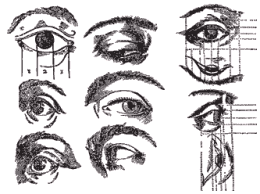 Right at the end of preparing a presentation on aesthetics I discovered an online e-text of The Principles Of Aesthetics by Dewitt H. Parker – it was too late to make use of it but it looks like a resource for the future. The text is HERE.
Right at the end of preparing a presentation on aesthetics I discovered an online e-text of The Principles Of Aesthetics by Dewitt H. Parker – it was too late to make use of it but it looks like a resource for the future. The text is HERE.
The book is just one of many at Authorama Public Domain Books HERE
Other sources of e-texts:
http://www.digitalbookindex.org/about.htm
http://etext.lib.virginia.edu/ebooks/
—–0—–
All postings to this site relate to the central model in the PhD.
Summaries are HERE
Where does Aesthetics and Aesthetic experience fit in all of this? (re Wilber, heart-knowing, head-knowing, and the 3 ‘voices’)
see post on September 5th, 2007
Where does Aesthetics and Aesthetic experience fit in all of this?
Aesthetics belongs to the science of philosophy (Criticality) BUT aesthetic experiences are ‘subjective-creative-mystical’ i.e they are Creative and subjective.
The Indian philosopher Coomaraswami said that art and religion were not similar – they are, he said, the same. I would say that they are the same in that both involve engagement that involves a ‘loss of ego boundaries’ i.e. they are ‘unitive’ experiences. But both of these are or can be morally neutral activities. Religion on the other hand is false if its spirituality does not engender right action.
Aesthetic experience then, so I argue, is closer to artistic creation and is similar to mystical experience. We may or may not see our unitive experience as taking place within a moral context or a moral world-view, such as a religion. That is a unitive experience like membership of a religion, or a taste for spiritual food does not of itself mean that we and our actions are moral. We have more or less the sensibility and will to grasp the moral implications and act on them
Our moral sense comes from parents, family, schooling etc. If we are religious then a major shaper of our moral sensibility is the founder of the religion and his/her teachings. If we are Humanist or a ‘Free-thinker’ other inspiring individuals shape our moral sensibility.
—–0—–
All postings to this site relate to the central model in the PhD. Summaries are HERE
Ancient wisdom: insights from Sufi sacred Islamic poetry
I came across this wonderful poem in The Sufi Book of Life by Neil Douglas-Klotz (p.56)
‘I’ and ‘you’ focus light
like decorative holes cut
in a lampshade.
But there is only One Light.
‘I’ and ‘you’ throw a
thin veil between
heaven and earth.
Lift the veil and all
creeds and theologies disappear.
When ‘I’ and ‘you’ vanish,
how can I tell whether I am
in a mosque, a synagogue,
a church, or an observatory.
Shabistari – Sufi poet
We think that the idea that truth is one and all religions are the same at their core – that as Ghandi said,”God has no religion”- as being modern but here we can see these ideas in this poem from the 13th/14th century.
In looking for more information I came upon the material listed below. It set me thinking along a theme that first took my interest long ago. So much wisdom that we desperately need is enshrined not just in the philosophy of the past but also in ancient poetry and other forms of literature.
A wealth of wisdom and sacred insight can be ‘sipped at’ the Poetry Chaikana
What is a Chaikhana?
A chaikhana is a teahouse along the legendary Silk Road pilgrimage and trading route linking China to the Middle East and Europe. It is a place of rest along the journey, a place to shake off the dust of the road, to sip tea, and to gather together to sing songs of the Divine..
So enjoy visiting the tea-house.
The complete text of Shabistari’s The Rose Garden is HERE
You can find out more about Shabistari starting with Wiki HERE
Another good place to start re Sufism and beautiful poetry is the UK Rumi organization HERE
—–0—–
All postings to this site relate to the central model in the PhD.
Summaries are HERE
Wilber, heart-knowing, head-knowing, and the 3 ‘voices’ through which we engage with reality
Heart-knowing, head-knowing, and the 3 ‘voices’ through which we engage with reality
The three intrapersonal ‘voices’ of human engagement, have previously been presented as Caring, Creativity and Criticality.
Our Caring, Creativity and Criticality ways of engaging are developed through internalizing the voices of parents and family and then all of the Humanities, the Arts and the Sciences experiences we have at school and in the wider society.
Corresponding to the three voices we have three ways of knowing:
1 the ‘social-others-centred’ way of knowing – in the case of Caring
2 the ‘subjective-creative-mystical’ way of knowing – in the case of Creativity and
3 the ‘objective-reasoning-scientific’ way of knowing – in the case of Criticality
So;
Caring, the ‘social-others-centred’ way of knowing = the internalized voice of the Humanities, and is about engaging with reality via the moral viewpoint
Creativity, the ‘subjective-creative-mystical’ way of knowing = the internalized voice of the Arts, and is about engaging with reality via the subjective viewpoint
Criticality the ‘objective-reasoning-scientific’ way of knowing = the internalized moral voice of the ‘Sciences’ and is about engaging with reality via the (supposed) objective viewpoint.
NB Criticality is wider that what is normally meant by the Sciences and scientific methods. It includes philosophy and such activities as Eng Lit criticism. Why? Because it is about reasoning and other ‘left-brain’ objective activities. The participant assumes the position of being objective and is learning or teaching about phenomena – s/he is not learning or teaching in the phenomena – a distinction that correlates with that between ‘knowing that’ (Paris is the capital of France) and ‘knowing how’ (being able to dance a response to a tragic event).
Heart-knowing and head-knowing, left-brain and right-brain
Heart-knowing, the ‘subjective-creative-mystical’, is seen as partly an innate, intuitive way of knowing and seems to relate to right-brain activities.
The ‘methods of the ‘objective-reasoning-scientific’’voice’ seem to relate to right-brain activities.
The third form, i.e. social knowing, is seen as deriving from the cultural interpersonal matrix of family and community relationships, internalized as the Caring seems to draw upon both sides of the brain (as do architects!).
—–0—–
NB All postings to this site relate to the central model in the PhD.
Summaries are HERE
Key photography quotations toward defining a photographic aesthetic
This is a running list of quotations selected to help me move toward an understanding of my own photographic aesthetic – based on the SunWALK model.
“The camera is an instrument of detection. We photograph not only what we know, but also what we don’t know. ” Lisette Model
The book (Camera Lucida by Roland Barthes) develops the twin concepts of studium and punctum: studium denoting the cultural, linguistic, and political interpretation of a photograph, punctum denoting the wounding, personally touching detail which establishes a direct relationship with the object or person within it. Wiki
While there is perhaps a province in which the photograph can tell us nothing more than what we see with our own eyes, there is another in which it proves to us how little our eyes permit us to see. ~Dorothea Lange
A photograph is usually looked at – seldom looked into. ~Ansel Adams
There are always two people in every picture: the photographer and the viewer. ~Ansel Adams
The camera can photograph thought. ~Dirk Bogarde
I think the best pictures are often on the edges of any situation, I don’t find photographing the situation nearly as interesting as photographing the edges. ~William Albert Allard, “The Photographic Essay”
When words become unclear, I shall focus with photographs. When images become inadequate, I shall be content with silence. ~Ansel Adams
The goal is not to change your subjects, but for the subject to change the photographer. ~Author Unknown
A photograph is memory in the raw. ~Carrie Latet
All photos are accurate. None of them is the truth. ~Richard Avedon
The camera cannot lie, but it can be an accessory to untruth. ~Harold Evans, “Pictures on a Page”
You don’t take a photograph, you make it. ~Ansel Adams
Most things in life are moments of pleasure and a lifetime of embarrassment; photography is a moment of embarrassment and a lifetime of pleasure. ~Tony Benn
A great photograph is a full expression of what one feels about what is being photographed in the deepest sense, and is, thereby, a true expression of what one feels about life in its entirety. ~Ansel Adams
I never question what to do, it tells me what to do. The photographs make themselves with my help. ~Ruth Bernhard
A Ming vase can be well-designed and well-made and is beautiful for that reason alone. I don’t think this can be true for photography. Unless there is something a little incomplete and a little strange, it will simply look like a copy of something pretty. We won’t take an interest in it. ~John Loengard, “Pictures Under Discussion”
I just think it’s important to be direct and honest with people about why you’re photographing them and what you’re doing. After all, you are taking some of their soul. ~Mary Ellen Mark
Photography records the gamut of feelings written on the human face, the beauty of the earth and skies that man has inherited, and the wealth and confusion man has created. It is a major force in explaining man to man. ~Edward Steichen
The photograph itself doesn’t interest me. I want only to capture a minute part of reality. ~Henri Cartier Bresson
The creative act lasts but a brief moment, a lightning instant of give-and-take, just long enough for you to level the camera and to trap the fleeting prey in your little box. ~Henri Cartier Bresson
Photographers deal in things which are continually vanishing and when they have vanished there is no contrivance on earth which can make them come back again. ~Henri Cartier-Bresson
If I could tell the story in words, I wouldn’t need to lug around a camera. ~Lewis Hine
A photograph is like the recipe – a memory the finished dish. ~Carrie Latet
Everyone has a photographic memory, but not everyone has film. ~Author Unknown
Photographs that transcend but do not deny their literal situation appeal to me. ~Sam Abbel
A picture is worth a thousand words; a slide show is both. ~Author Unknown
One photo out of focus is a mistake, ten photo out of focus are an experimentation, one hundred photo out of focus are a style. ~Author Unknown
All photographs are there to remind us of what we forget. In this – as in other ways – they are the opposite of paintings. Paintings record what the painter remembers. Because each one of us forgets different things, a photo more than a painting may change its meaning according to who is looking at it. ~John Berger
I didn’t want to tell the tree or weed what it was. I wanted it to tell me something and through me express its meaning in nature. ~Wynn Bullock
Photography deals exquisitely with appearances, but nothing is what it appears to be. ~Duane Michals
The negative is the equivalent of the composer’s score, and the print the performance. ~Ansel Adams
Useful sites
http://www.photoquotes.com/ Blogs on Photography
http://photosleavehome.blogspot.com/2005/03/john-berger-understanding-photograph.html
http://www.temple.edu/photo/photographers/
http://moma.org/collection/depts/photography/index.html
http://www.photo-seminars.com/fame.htm
—–0—–
NB All postings to this site relate to the central model in the PhD.
Summaries are HERE
Diagram of the SunWALK model of Holistic Education
The SunWALK logo/diagram conveys the basic ideas of the SunWALK model of Holistic Education;
The diagram functions as a logo, badge, a mandala, diagram, curriculum outline, model of what it is to be human (- and even as a building plan design).
You can read more about the basic ideas HERE
or a complete doctoral thesis HERE
The Whole and the parts, awe and concepts, head and heart
Central to Heschel’s belief and teachings was that we should stay in touch with that experience of the Whole that engenders awe and wonder (what he also calls ‘radical amazement’). He says that;
The secret of being human is care for meaning. Man is not his own meaning, and if the essence of being human is concern for transcendent meaning, then man’s secret lies in openness to transcendence. Existence is interspersed with suggestions of transcendence, and openness to transcendence is a constitutive element of being human……. Indeed, the concern for meaning of human being is what constitutes the truth of being human. A J Heschel P66 Who is Man 1965 Stanford Unity Press
This emphasis on at-one-ment however is not to the exclusion of our duality with the ‘real’ world:
The search for reason ends at the shore of the known;on the immense expanse beyond it only the sense of the ineffable can glide.It alone knows the route to that which is remote from experience and understanding. Neither is amphibious: reason cannot go beyond the shore,and the sense of the ineffable is out of place where we measure, where we weigh. Citizens of two realms, we must all sustain dual allegiance:we sense the ineffable in one realm;we name and exploit reality in another. Between the two we set up a system of references,but can never fill the gap They are as far and as close to each other…as life and what lies beyond the last breath. Man is Not Alone p8.
We learn through the dynamic switching between experiences of the Whole and experiences of the parts. Wilber also helps illuminate the ‘dance between the Whole and the parts;
“To understand the whole it is necessary to understand the parts. To understand the parts, it is necessary to understand the whole. Such is the circle of understanding. We move from part to whole and back again, and in that dance of comprehension, in that amazing circle of understanding we come alive to meaning, to value, and to vision: the very circle of understanding guides our way, weaving together the pieces, healing the fractures, mending the torn and fractured fragments, lighting the way ahead – this extraordinary movement from part to whole and back again, with healing the hallmark of every step, and grace the tender reward.”
Eye of Spirit; an integral vision for a world gone slightly mad by Ken Wilber (1997)pub. Shambhala p.1.
Since on this site, and in the Build a Better Model of Education course, we are about to become ‘traders in concepts’ we should keep in mind Heschel’s wonderful statement:“Concepts are delicious snacks with which we try to alleviate our amazement”- A. J. Heschel, Man Is Not Alone p.7
This need to experience the Whole as well as focusing on parts, such as concepts, is also contained in the following metaphor:“The larger the island of knowledge,the longer the shoreline of mystery.” Anon
The above quotations teach us a lot about the theme of ‘parts and the Whole’. Another major theme is that of generacy, as opposed to degeneracy. This includes the ability to see particulars as part of the Whole in such a way as to experience their full significance (and perhaps stop time and go beyond place). The alternative to being taken out of yourself is to be eternally burdened with self!
—–0—–
All postings to this site relate to the central model in the PhD. Summaries are HERE
‘To see a world in a grain of sandand a heaven in a wildflower,
Hold infinity in the palm of your hand,and eternity in an hour.’ William Blake
Mystical implications of photography
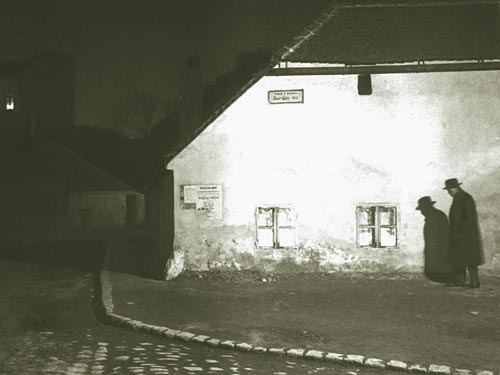 Photo by: Andre Kertesz – source
Photo by: Andre Kertesz – source
For some time now I have been interested in how both cinema and photography might be compared to mystical experience. I will post separately re cinema.
One point of comparison lies in how the two see the moment.
In the mystical the moment is seen as out of time – a visit to the eternal present.
In photography the moment is given duration, brought frozen into time – up to a theoretical eternal existence.
Of course a major source of inspiration, in both his photography and his writings, is Henri Cartier-Bresson;
A wonderful retrospective is HERE at Magnum
However in assembling some materials to help articulate a view re photography and the mystical I have discovered some fine materials high amongst which is The Ongoing Moment by Geoff Dyer. Concerning Andre Kertesz, see photo at the top of this post, he says;
What Kertesz sees when he looks out at the street is often this silhouetted representative of his own feelings about being adrift and unappreciated in New York. The people in the streets, heading to shops, are emissaries of his own sadness. That is the lot of the photographer: you walk the streets or sit on a bench – or you look out of the window at people……
Some more wonderful photographs by Andre Kertesz;
TO BE DEVELOPED
You can hear a fascinating interview with Geoff Dyer HERE
—–0—–
All postings to this site relate to the central model in the PhD. Summaries are HERE
Love is Beauty, Knowledge, Intellection: Abdu’l-Baha, St Augustine and Saul Bellow
Experience needs to be transcendent as well as of the here and now if we are to create teaching that is holistic – that is we have to give kids opportunities to sense the Wholeness as well as the parts. But it doesn’t necessarily have to be within one particular religious context.
Happiness and peace and development would be greatly helped if we recognized that there are many paths to the summit of the hill.
From Christianity, amongst other sources, we learn that ‘God is love’. But what else is love and how does it relate to learning and knowing? Perhaps the following quotations indicate that love (affect) and what we choose to identify with determines, or at least shape, what we come to know. Learning ultimately takes place within a love relationship:
A person is only as good as what they love.” Saul Bellow.
Love revealeth with unfailing and limitless power the mysteries latent in the universe.”
‘Abdu’l-Baha.
Love is the beauty of the soul.” St. Augustine.
“Knowledge is love.” `Abdu’l-Baha.
—–0—–
All postings to this site relate to the central model in the PhD. Summaries are HERE
40 Meditation Practices – the Chris Corrigan collection
A certain Chris Corrigan has assembled 40 meditation practices (a few links need re-newing)
Forty meditation practices
40 meditation practices in 4 positions
Walking Meditation
- Insight Meditation
- Vipassana walking meditation
- Walking meditation practice and metta
- Walking and mindfulness meditation
- Zen walking meditation
- More mindfulness
- Burmese Buddhist walking
- Thich Nhat Hanh style walking meditation
- Walking the labyrinth
- Walking meditation fundamentals
- “Walking,” by Henry David Thoreau
Standing Meditation
- Standing Chi Kung: Taoist standing practice
- Kyudo (standing zazen) archery
- Million dollar qi gong practice: more on the benefits of standing meditation
- Wu Ji posture: instructions for standing and guiding awareness
- Hapkido breathing exercises for standing meditation
- Zhan Zhuang: Instructions for Tai Chi standing meditation
- Triple Burner Standing Meditation: More exercises for circulating qi
- Zen standing meditation: also with breathing and vocalization methods
- Ku meditation club handbook: practices from many spiritual traditions
- Standing meditation with a tree
Sitting meditation
- Meditation Handbook approaches (and a lot of other stuff)
- Shinay Tibetan practice
- C’han sitting practice
- Jack Kornfeld sitting meditation
- Won Buddhism sitting practice
- Zazen practice
- Thich Nhat Hanh sitting meditation
- Comparison of Christian and Zen sitting practice
- Four sitting practices
- Tonglen practice while sitting
Lying meditation
- Buddhist lying meditation
- Lying meditation posture
- Lying meditation and prayer
- Sayadaw U. Jatila on the benefits of lying meditation
- Lying meditation andthe four fold way
- Yoga Savasana pose
- Lying meditation for teens
- More on Buddhist lying meditation
- Sri Chinmoy on lying meditation
- Kundalini Rainbow meditation
Be sure to visit Chris Corrigan’s amazing collection of stuff HERE
—–0—–
All postings to this site relate to the central model in the PhD. Summaries are HERE
Epiphany, insight via autobiography and ‘autoethnography applied’
In my PhD I used aspects of autobiography including episodes that were epiphanic. By epiphany I here mean;
a. A sudden manifestation of the essence or meaning of something.
b. A comprehension or perception of reality by means of a sudden intuitive realization: “I experienced an epiphany, a spiritual flash that would change the way I viewed myself” Frank Maier.
I would add to the ‘Frank Mair example above and make it;
“I experienced several epiphanies, that would change the way I viewed education, the world and myself”
The particular episodes in my life I discovered to my surprise had led to the main dimensions of what was to become my model of what it is to be human the ‘I’ (Creative -subjective), the ‘WE’ (Caring – moral) and the ‘IT’ (Criticality-objective) dimension respectively that give us the three ways of engaging with reality. I had moved into autoethnography.
Autoethnography is an established, but still emergent, form of qualitative research. Described by Ellis and Bochner (2000) it is:
an autobiographical genre of writing and research that displays multiple layers of consciousness, connecting the personal to the cultural. Back and forth autoethnographers gaze, first through an ethnographic wide-angle lens, focussing outward on social and cultural aspects of their personal experience; then they look inward, exposing a vulnerable self that is moved by and may move through, refract, and resist cultural interpretations – see Deck, (1990); Neuman, (1996); Reed-Danahay, (1997). As they zoom backward and forward, inward and outward, distinctions between the personal and cultural become blurred, sometimes beyond distinct recognition. Usually written in first-person voice, autoethnography , autoethnographic texts appear in a variety of forms – short stories, poetry, fiction, novels, photographic essays, personal essays, journals, fragmented and layered writing and social science prose. In these texts, concrete action, dialogue, emotion embodiment, spirituality, and self-consciousness are featured, appearing as relational and institutional stories affected by history, social structure, and culture, which themselves are dialectically revealed through action, feeling, thought and language.
This does seem to well describe my intentions, and the way I proceeded. Storying is seen as essential for learners in the model, as well as being present in the autobiographic approach. The legitimacy of the applied dimension lies in the fact that I knew I wanted to present a model before I knew that I/the thesis needed to use the autobiographic – the surprise, for me, was how much they are one and the same.
Action research, focusing down to the autobiographic and the ethnographic, is explicit, or implicit, in the overall process of the SunWALK model per se. In a sense the thesis is the story of the thesis – of its evolution from the dynamic between praxis and reflection and beliefs and values. As White (2002) says action research can increase the likelihood that one’s behaviour is congruent with one’s theories about teaching and learning – and, one hopes, the values with which we choose to identify ourselves.1
Given that the primary intention was to create a new model of education intention the suggestion was made that this could be called ‘Applied Autoethnography’.
To be developed
—0—
Ideally I would like to see every school and every teacher connected with research and theory-creation, with relevant university departments working as supportive partners to the teachers. The subject of the study was my self, and my teaching, and the aim was self-understanding as well as producing a model of education – such an action research approach in all schools could not only ‘grow’ more effective teaching, but would also deepen and widen the possible communities to which teachers could belong.
—–0—–
All postings to this site relate to the central model in the PhD. Summaries are HERE
What is art? – definitions
What is art?
One definition that works for me is;
Art is culturally significant meaning, skilfully encoded in an affecting, sensuous medium.
Richard Anderson quoted in Freeland (2001 p. 77)
I would make one change;
Art is culturally, and personally, significant meaning, skilfully encoded in an affecting, sensuous medium.
There is a whole range of art that I know has cultural meaning but for it to enable an aesthetic experience in me it has also to have personal as well as cultural meaning.
TASKS:Lesson questions
How far, and in what ways, has art , through the dominance of conceptual art, replaced philosophy?
How far, and in what ways, has art replaced religion?
More resources
Extensive quotations from Tolstoy at Professor Julie van Camp’s site are HERE
—–0—–
All postings to this site relate to the central model in the PhD. Summaries are HERE
Story and Personal Myth in making our selves, and our education, whole
My personal myth Island, Shoreline and Ocean –
a view of story in Personal Development and in Holistic Education
Introduction:
By way of an introduction here are a few succinct thoughts. Skip this if you want to go straight to my ‘personal myth’;
Myth operates in us – its part of being human – like philosophizing. Therefore we should make the most of it – in terms of the mythology we make, and that with which we choose to identify.
Story is central to our meaning-making and how we (choose) to make sense of the world and give account of our encounters and experiences.
Myth, as opposed to story generally, is about our deepest concerns and is characterized as narrative that gives account of the unknown and unknowable as well as some of the known. E.g. we die but we don’t know what, if anything, happens after that. Myth creates and is derived from beliefs.
Myth intrapersonally is the clothing we give to the psycho-spiritual dynamics of inner experience.
Myth interpersonally is the stories we tell each other to explain encounters with the (mainly) unknown and unknowable.
Karen Armstrong’s A Short History of Myth is a must because it makes clear the relationship between myth and religion and world-views.
“Without myth, cult, ritual and ethical living, a sense of the sacred dies,” says Armstrong. Without the discipline of mythical thinking and practice, it was difficult for many to avoid despair. The dark epiphanies of the 20th century can be blamed on “the absence of a viable mythology” that could help us face the unspeakable. Guardian review by Tim Radford
A personal myth operates in us whether we choose to articulate it or not. It is closely allied to what one psychologist called ‘our personal script’ and the another (Kelly) called our set of ‘personal constructs’.
We can help in healing ourselves by articulating our personal myth in comparison and contrast to the group myths around us – or that exist as historical artifacts.
Restorying, (e.g.by writing different versions of) our personal myth can enable us to re-frame our personal experience and gain degrees of control and depths of energy that previously were denied us through locked-up pain.
Creating a personal myth can facilitate better self-understanding and there is potentially a powerful tool for teaching and learning.
My personal myth is here;
The ‘Island, Shoreline and Ocean’ personal Myth
The personal myth that follows was written as a ‘one-page’ way of expressing a) a sense of the relationship with the cosmos, the Whole, and b) of a range of the ideas in, and behind, SunWALK. Jane is part of me, perhaps the same Jane as in Jane’s Short Story in Chapter 1.
The personal myth is an attempt at re-storying one kind of knowing. A felt need to undertake a re-storying of knowing can lie in acknowledgement of the fact that we know, and need to know, and need to express that knowing, in more ways than the empirical-reasoning mode – hence Island, Shoreline, Ocean. To admit other ways of knowing, is to admit that in our wholeness we are more than our senses and our reasoning. It is also to admit that in our knowing we are surrounded by mystery, which we encounter. We in various ways give accounts of those encounters.
3:3 Island, Shoreline and Ocean
a personal myth concerning the nature of mystical experience & its relationship to consciousness, & to knowledge creation – as such it is an attempt to include as much as possible of what I learned during the eleven year journey of the thesis – in a ‘one page’ story
The sun always woke her. Every day Jane walked through her garden, inspecting this plant and that, analysing what needed to be done. The quest was never-ending. Sometimes she sat a while on an old tree stump in order to consider the tasks and challenges, trying to work out the feelings and puzzles of what didn’t seem quite right, what didn’t feel quite right. What she couldn’t physically arrange she sometimes tried to paint or write – she had an imaginary garden as well as a real one. Sometimes she looked at her neighbours’ gardens, wondering if that would give her inspiration, but she was always left with the feeling that her most important answers came from elsewhere.
Every day beneath the practical considerations she felt a longing. Having made her review of her garden Jane walked over the fields, across the two streams that eventually made their way down to the sea, and along the cliff, and down to the shoreline. At the shoreline she breathed in her sense of the infinity of the ocean, along with the ozone-heavy, sea-weedy, sea air.
Frequently she imagined the island’s shoreline around the island’s circumference. In her mind’s eye she saw each place being shaped in some different way by the ocean – which was sometimes gentle, and was sometimes awesome in its relentless might. Sometimes the feelings that filled her were so powerful that she was overcome. Sometimes the beauty of being in the presence of the ocean was so great that she felt that neither garden nor painting nor poetry would ever fully satisfy the deepest longing.
Often after such reverie she slipped into the sea.
The sea had so much salt that she just floated. And, when the temperature was right, in floating, eyes closed, she lost all sense of where she ended and where the surrounding sea began. There was no separate sea, no separate self – it was just ….. being. It was always that way, just being. At such times she felt both full and empty, both powerless and at that same time she felt herself to be the very ocean that insistently carved and re-carved the island shoreline.
Mostly at that point she just wanted to stay, to be just part of this place between land and sea, like a driftwood sculpture, ocean-polished, that had been thrown up after a long journey from some river bank, high up some vaguely-remembered river. The shoreline was exquisitely the best of places. But she always took that first step. A first step on the walk back to her garden. And with the walking the experience that was ineffable started to give up insights and possibilities to both refine the garden, and to extend it into some more of the island’s familiar, wilderness, space.
In the evenings she and her friends sat beneath the moon, in whichever was the most interesting of their gardens, at that particular time, and they discussed the issues that concerned them. They all, more or less, had similar such deep experiences as Jane. The ongoing conversation was what united them, along with their respect for how they clothed so differently, in imagination and form, the experiences that were ineffable.
C. from an unpublished doctoral thesis by Roger Prentice, Northumberland ver July 2003
—–0—–
Karen Armstrong’s book A Short History of Myth is HERE NB Read the Customer Reviews which are excellent and ignore the Editorial Reviews which are carping, mean-spirited and self-serving!
Relevant book that looks interesting Restorying Our Lives: Personal Growth Through Autobiographical Reflection HERE
Island map SOURCE
—–0—–
All postings to this site relate to the central model in the PhD. Summaries are HERE
Texts and Contexts and the Ultimate context – post-modernism and dinosaurs
All postings, and pages, for this site are seen as texts as in ‘particulars’ or parts. But each post or page is as I will later point out in relation to an ‘ultimate’ context.
The parts or particulars are as in Wilber;
“To understand the whole it is necessary to understand the parts. To understand the parts, it is necessary to understand the whole. Such is the circle of understanding.
We move from part to whole and back again, and in that dance of comprehension, in that amazing circle of understanding we come alive to meaning, to value, and to vision: the very circle of understanding guides our way, weaving together the pieces, healing the fractures, mending the torn and fractured fragments, lighting the way ahead – this extraordinary movement from part to whole and back again, with healing the hallmark of every step, and grace the tender reward.” Eye of Spirit; an integral vision for a world gone slightly mad by Ken Wilber (1997) pub. Shambhala p.1.
Handling more and more challenging texts is one way to think of progress in education.
One aspect of post-modernism is the attention paid to con-texts. Literally con-text = what (meaning) comes with the text. A whole bunch of questions then become vital for examining the the text in one or more contexts. For example who wrote it or made it and for whom – and why, with what reward, what pressures etc.
One key variable then for the teacher is how s/he emphasizes (or de-emphasizes) contexts as s/he conducts discourse with the class.
I always felt that historical contexts were less important than how a text helps us right now- the group – in informing our selves more deeply concerning, ‘What it is to be positively and fully human’.
One source of novelty in post-modernist art is to re-contextualize objects – literally to give them a new framework. A friend got her first-class honours degree for – amongst other pieces of work – taking a reproduction of an old master and tucking under the arm of a central figure a baby dinosaur.
The most memorable teaching of my life was with a group 12-13 year olds when discussing the shortest story in the world, “When I woke up the dinosaur was still there.” All the drive and creativity was in construction of possible contexts as well as discussing whether or not it constitute a ‘story’ in any meaningful way. In due course I will post sections of the video of the ‘story lesson’.
Schools and teachers should provide experiences that help with developing a sense of the Whole and not just the ‘hell of relativity’ when the world is presented as just endless bits.
The ultimate context that we are all in, in reading all of the texts that come our way, is one of mystery, of not knowing. When we accept that we can enjoy both the concepts of separation and duality and the amazement of laying down the burden of self in an experience of unity- as in Heschel’s;
“The world presents itself in two ways to me. The world as a thing I own, the world as a mystery I face. What I own is a trifle, what I face is sublime. I am careful not to waste what I own; I must learn not to miss what I face. We manipulate what is available on the surface of the world; we must also stand in awe before the mystery of the world. We objectify Being but we also are present at Being in wonder, in radical amazement.” A. J Heschel
Peter Ustinov makes the point in a different way; “We are united by our doubts and divided by our convictions.”
Our encounters with the Whole are part of the personal story (history or her-story) that we make up to explain the cosmos. We should all write our ‘personal myth’ at some stage. As an example I will post mine separately.
In the light of the above comments I have added this to the front page of the site;
CONTEXTUAL QUESTIONS AND ANSWERS
3 Questions and suggested answers that provide the context for all posts and pages on these sites
—–0—–
Q 1) “What is it to be positively & fully human?” = the most important of all questions. My answers are in 2 and 3 below.
—–0—–
Q 2) “What is it to function holistically?” My answer =
“To proceed in all particulars with a sense of the whole.”
Two quotations that are key to understanding. Firstly Jung’s,
“The utterances of the heart— unlike those of the discriminating intellect— always relate to the whole.”
Secondly Heschel’s;
“Concepts are delicious snacks with which we try to alleviate our amazement.”
—–0—–
Q 3) How in one sentence does my PhD answer the question, “How should we educate to create a paradigm shift in education?”
—–0—–
The SunWALK model of spiritualizing (or humanizing) pedagogy sees human education as:
the storied development of meaning, which is
constructed, and de-constructed,
physically, mentally and spiritually, through
Wise & Willing Action, via
Loving and Knowing – developed in
Community, through the
‘Dialectical Spiritualization’ of
Caring, Creativity & Criticality processes, all undertaken in the light of the
‘Sun’ of chosen higher-order values and beliefs, using
best available, appropriate content.
NB Please see these 3 questions, and suggested answers, as the context for all postings and pages on these sites.
The diagram that pulls everything together
Summaries of SunWALK model are HERE
—–0—–
The ‘Rules for being Human’, Perennial Philosophy and Universalism
These ‘Life-Rules’ by Cherie Carter-Scott, from her book If Life is a Game, These are the Rules are becoming well-known and they seem to me to be are interesting in relation to a holistic perspective, and to the ideas of Perennial Philosophy and a mystical world-view.
When you were born, you didn’t come with an owner’s manual; these guidelines make life work better.
1. You will receive a body. You may like it or hate it, but it’s the only thing you are sure to keep for the rest of your life.
2. You will learn lessons. You are enrolled in a full-time informal school called “Life on Planet Earth”. Every person or incident is the Universal Teacher.
3. There are no mistakes, only lessons. Growth is a process of experimentation. “Failures” are as much a part of the process as “success.”
4. A lesson is repeated until learned. It is presented to you in various forms until you learn it — then you can go on to the next lesson.
5. If you don’t learn easy lessons, they get harder. External problems are a precise reflection of your internal state. When you clear inner obstructions, your outside world changes. Pain is how the universe gets your attention.
6. You will know you’ve learned a lesson when your actions change. Wisdom is practice. A little of something is better than a lot of nothing.
7. “There” is no better than “here”. When your “there” becomes a “here” you will simply obtain another “there” that again looks better than “here.”
8. Others are only mirrors of you. You cannot love or hate something about another unless it reflects something you love or hate in yourself.
9. Your life is up to you. Life provides the canvas; you do the painting. Take charge of your life — or someone else will.
10. You always get what you want. Your subconscious rightfully determines what energies, experiences, and people you attract — therefore, the only foolproof way to know what you want is to see what you have. There are no victims, only students.
11. There is no right or wrong, but there are consequences. Moralizing doesn’t help. Judgments only hold the patterns in place. Just do your best.
12. Your answers lie inside you. Children need guidance from others; as we mature, we trust our hearts, where the Laws of Spirit are written. You know more than you have heard or read or been told. All you need to do is to look, listen, and trust.
13. You will forget all this.
14. You can remember any time you wish.
(From the book “If Life is a Game, These are the Rules” by Cherie Carter-Scott)
TASK:/LESSON
1 Take a look at Perennial Philosophy and the Golden Rule and compare and contrast them to Carter-Scott’s ‘Rules’.
2 Re-write these according to your beliefs and world-view.
3 Find out what Cherie Carter-Scott meant by reading her book.
—–0—–
All postings to this site relate to the central model in the PhD. Summaries are HERE
PERENNIAL PHILOSOPHY – TWO VIEWS A) BY KEN WILBER AND B) BY DEB PLATT
Even a cursory glance at the ideological and physical conflicts of today will indicate the desperate need for understanding that enables a ‘clearing in the forest’ of beliefs – one that will enable harmony in diversity.
.
On this site I argue that the deepest recognition has to lie in our humanity which we hold in common with all others – I am human, you are human, they are human – we all are human. However since religion exists in many and powerful manifestations the most important of all questions is, “In what ways is there a common light at the centre of of all of the great world religions?” The answer is presented in Perennial Philosophy. Perennial Philosophy is not a particularly good title – something like ‘core mystical reality’ or ‘the great chain of being’ are more accurate, albeit much clumsier titles.
In many ways the appeal to recognize sameness in others, harmony in diversity, is also a call to a kind of federalism. That is to say such a recognition will enable the people of the world to hold an allegiance to the whole as well as to the particular – much as most Americans or Germans hold an allegiance to their national government as well as to their state governments.
.
HERE IS HOW KEN WILBER SUMMARIZES THE SEVEN MAJOR POINTS OF THE PERENNIAL PHILOSOPHY, IN HIS BOOK GRACE AND GRIT:
1. Spirit exists.
2. Spirit is found within.
3. Most of us don’t realize this Spirit within, however, because we are living in a world of sin,
separation, and duality–that is, we are living in a fallen or illusory state.
4. There is a way out of this fallen state of sin and illusion, there is a Path to our liberation.
5. If we follow this path to its conclusion, the result is a Rebirth or Enlightenment, a direct experience
of Spirit within, a Supreme Liberation, which–
6 marks the end of sin and suffering, and
which
7 issues in social action of mercy and compassion on behalf of all sentient beings.
.
THIS IS HOW DEB PLATT PRESENTED HER LATE LAMENTED SITE ON WHICH SHE BROUGHT TOGETHER A VAST AND BEAUTIFUL SELECTION OF QUOTATIONS FROM WORLD RELIGIONS
.
If anyone knows what happened to her site please tell me. Her site was a truly great contribution toward religious understanding and its disappearance a great loss. Equally if you managed to copy her site before it was taken down please let me know (onesummit ATgmail.com replace AT with @).
This is the ‘universal’, mystic heart of all of the great wisdom traditions as Deb Platt presented it;
• There’s a reality beyond the material world:
• Which is uncreated.
• It pervades everything,
• but remains beyond the reach of human knowledge and understanding.
• You approach that reality by:
• Distinguishing ego from true self
• Understanding the nature of desire
• Becoming unattached
• Forgetting about preferences
• Not working for personal gain
• Letting go of thoughts
• Redirecting your attention
• Being devoted
• Being humble
• Invoking that reality
• Surrendering
• That reality approaches you through:
• Grace
• The teacher
• You’re transformed so that you embody that reality by:
• Dying and being reborn
Holistic Education doesn’t have allegiance to any one religion or philosophy, but Perennial Philosophy is very important for many and is the position of this site. It is motivated by recognition of the essential oneness of the great wisdom traditions
(SEE also Aldous Huxley’s Perennial Philosophy or Chap 2 of Jack Miller’s Educating for Wisdom & Compassion)
Jane’s Short Story; teaching children ‘nowness’ in creative writing and photography
In the unpublished doctoral thesis, from which this piece and Jane’s Short Story, is largely taken, the range of concerns include ‘the perpetuation in the present of early experience’. I’m interested to discover that one definition of ‘nowness’ is presentness: the quality of being the present; “a study of the pastness of the present and…of the presentness of the past”.
I wrote Jane’s Short Story to see what a Year 7 class (11 – 12 year olds in the UK) could ‘handle’, but it has become a major piece for teaching me, as well as for teaching others.
Jane’s short story (line numbers are simply to help in discussion)
1 “Come to mummy Jane. Come on, yes, you can do it.” Ste…steppp…stagger step..step got there BIGKISSmmmms’nice. Her mother’s nose stroked back and forth across her neck, as giggles of delight and laughter bubbled from Jane.
“Jane pay attention otherwise you’ll be asking me what the work is in five minutes time.”
5 (’Oh no I won’t Mr Moaner, I know perfectly well what you’re asking – so stop picking on me!’)
“Images Jane, images.”
Tulips. Gigantic red tulips, opened a bit beyond their best, and bigger than any red thing and redder than any red thing and she crawled to grasp, to know the greenness of the green cool green stems and embrace them and lose herself in the redness that was ……..
10 “I want you all to pay attention to the structure of your story……..”
How could she tell her mother that she never felt safe after he left. Only in his hugs with the smell of him did she ever, could she ever, feel safe. She chewed over this and poured herself another bowl of corn-flakes, sensing school time getting nearer and nearer. Her mother had left without giving the bus fare.
Yet again Jane’s leg itched from the nylon thread in the seam of her skirt.
15 She grasped the chair to ease her leg away from the itch, only to put her fingers under her chair and into some freshly placed chewing-gum. “Ugh! Boys are so disgusting!”
“Thank you Jane. I’m not sure what that has to do with careful control of your narrative but I suppose we should be grateful that at least you’ve re-visited our world, even though the visit will no doubt be brief. The trouble with you Jane is that you don’t use the possibilities and talent you have.”
20 Endless possibilities. The muddy brown wet sand, miles and miles of it. She sensed freedoms beyond the edge of her imagination, she would be all creation itself.
“Put your hat on Jane and come here – you’re not going in the sun until I put some cream on you.” Jane submitted to the sun-cream and enjoyed it but also remembered the tug of the harness around her shoulders – tug tug, with her running but not going anywhere.
25 “……and do try to put some images into your writing – do make it come alive.”
The finch, with feathers going in directions they shouldn’t, struggled on its side. The broken leg would not need mending because the shock was already killing the tiny creature. Jane hated the cat with an acid and granite hatred.
“You have ten minutes to finish your story.”
30 Jane sat back on her rump and examined her mother’s radiant face.
She spat out the tulip petals as her sadness entered her.
She was as rigid as the door he had slammed behind him.
She willed the incoming tide to consume her castle and leave only empty sands.
The finch stopped its fluttering and took on the stillness of death.
35 Jane wrote some lines.
Jane felt the tug tug of the harness and struggled to go somewhere.
—–0—–
Jane is, substantially, but not wholly, me. It was an attempt to make the feminine side of my soul ‘walk and talk’
In writing the story I reached back down to early memories with which to ‘clothe’ some of the levels in the streams of consciousness.
In continuing to work with children, or adults, I still sometimes use Jane’s Short Story – as a way to encourage others to create their own stories, made from their own real, and imagined, experience. I discovered how powerful it is if PFC (Philosophy for Children), and creative task-setting, are combined/interwoven – so much so that I believe that the two, when harnessed, together create something akin to ‘exponential development’ i.e the most powerful form of transformative learning. It is still a joy, and a learning experience, when children make their own creations walk and talk, sing and shout, just as Jane became ‘real’ to me, some 9 or 10 years earlier. From time to time I revisit the story and change a few words. Once I also gave it to the same class on succeeding years and asked them to see what they could see compared to their ‘reading’ of the previous year – and to say what differences they felt between the two readings. On the success of this I think that it is worth doing something similar with every class, i.e. for them to re-visit a piece two years running. What they are looking at, with each re-visiting, is, in part, the growth they have had via another year’s experience – a very useful exercise in meta-cognition for the children.
Although it was written when I was in my early fifties I include the story here because it encapsulates some of how autobiography is expressed in even the most creative, or the most abstract, of our work. The story was written in a ‘stream of consciousness’ style to see how well my classes could be at deconstructing the text. It was written in my second year of doing PFC. Sometimes I use it just as a text, sometimes the classes go on to write their own episodes from Jane’s life.
My experience is that children in Year 7 or 8 take a little time to decode the levels in the ‘stream of consciousness’ but then respond most sensitively to the possibilities that exist in and around the story. It seems to work at quite a deep level for some, and very few, except perhaps in initial perplexity, reject the story. It also helps to teach them that story, in its different kinds of truth, can combine re-collected personal experience and meld it with imaginative material. It can be a minor revelation for children who see ‘story is story’ and ‘real life = the truth.
Jane, both as part of my spirit and personal history, and as an independent spirit, has continued to exist, but she has also been transmogrified into the creations of other authors, adults as well as children. It is Jane in the personal myth called Island Shoreline Ocean, presented at the beginning of Chapter 3. My (our) past is re-presented and it is continuously transmogrified, in further re-representations. Each of us re-experiences what we are, as we engage or re-engage, with our beliefs, values, attitudes memories and new experiences. We echo past experiences in each new experience, even when we are seeking to help others in their creativity. Jane’s short story lives on in me as a crystallization of the feelings and images deep in my soul, deep, one might say, in my ‘present’. It has generated versions from 11 – 12 year olds, but also from an 84 year old man who, on one of my courses, wrote the first story he had ever written in his life. (He was pleased and amazed; I was deeply moved by his openness and courage!)
TASK/SUGGESTED LESSONS: It would be fascinating to combine the ideas above with photography!
Great photography blog HERE
Reason and Revelation, Religion and Philosophy – the pre-eminence of Socrates in Baha’i Writings
 Source
Source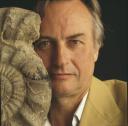 Richard Dawkins – bete noir of many religionists. Source
Richard Dawkins – bete noir of many religionists. Source
‘Faith in religion’ and ‘the reason and logic of philosophy’ are in direct opposition – right? We might be forgiven for thinking this is so, given some of what comes out of religions – and out of philosophers. One religion at least seems to elevate philosophy to a high status and to give a pre-eminent position to Socrates in particular. Baha’u’llah, the founder of the Baha’i religion, speaks in glowing terms of Socrates;
…… Socrates … was indeed wise, accomplished and righteous. He practiced self-denial, repressed his appetites for selfish desires and turned away from material pleasures. He withdrew to the mountains where he dwelt in a cave. He dissuaded men from worshipping idols and taught them the way of God, the Lord of Mercy, until the ignorant rose up against him. They arrested him and put him to death in prison. Thus relateth to thee this swift-moving Pen. What a penetrating vision into philosophy this eminent man had! He is the most distinguished of all philosophers and was highly versed in wisdom. We testify that he is one of the heroes in this field and an outstanding champion dedicated unto it. He had a profound knowledge of such sciences as were current amongst men as well as of those which were veiled from their minds. Methinks he drank one draught when the Most Great Ocean overflowed with gleaming and life-giving waters. (Baha’u’llah: Tablets of Baha’u’llah, Page: 146
Depending on how you read phrases like ‘he drank one draught when the Most Great Ocean overflowed with gleaming and life-giving waters’ Baha’u’llah seems to elevate Socrates to a station akin to that of a prophet.
In my SunWALK model reason (using the senses + reasoning) and revelation are seen as two of the ways by which we come to know. Others are;
a) tradition in the sense of the contents of the repositories of Art, Sciences and Humanities and the living traditions that are exercised in various communities.
b) caring by which I mean our heart consciousness that derives from the relationships in which we are embedded and the love and other positive qualities we have received from those with whom we have relationship. (Without having received love it is very difficult to love.)
Interesting piece by Dawkins HERE
Ugly women rejoice – Salem witches might be forgiven! – great history site for helping teach Arthur Miller’s The Crucible
If you are at all fascinated by our forefathers’ ignorance and cruelty or are about to teach lessons on Arthur Miller’s The Crucible – or more recent American history – check out Margaret Odrowaz-Sypniewski’s astonishing sites.
Below are a few snippets that might want to make you visit. The two that leap out for me are;
1 Canon law stated that after the death of a witch, that the accuser and judge might divide his/her property between them.
2 Witchcraft in Massachusetts singled out:
* spinsters [unmarried beyond the usual age of marriage]
* barren women
* the ugly
* the extremely successful
* the independent
* the reclusive
* the litigious [prone to lawsuits]
* the willful.
So would that include ‘fat cats’, lawyers and talentless air-head celebrities (just joking! RP)
Some more extracts
Puritans landed in Massachusetts in December in 1620, during the reign of James I of England, while they were trying to reach the Virginia Colony. A storm at sea directed them north.
Since many people could not afford the price of passage to the American colonies, they indentured themselves to the ship’s captain or another colonist. It usually took five to seven years to pay the money used for passage to the New World. After this time was up, their masters were required to provide their indentured servants with farm tools, seed to grow their own crops, and other essentials they needed to make it on their own.
By 1630 the population of Massachusetts was around 2,000 people. It was then that Governor John Winthrop would begin his first term of office. The Massachusetts Bay Colony would not have a royal standing until May 12, 1686. Most women had as many as twenty-five (25) pregnancies in their life. Families generally consisted of twenty-five people including grandparents, parents, children and their wives. The average life expectancy was forty-five years of age. There were many that lived into their nineties, while children were at the greatest risk during the first years of their lives. Pregnant women were at high risk of dying in childbirth. Most women had to work before and after the birth of their children because the early colonial times were hard and everyone had to work long and difficult hours to survive.
Dying was a regular part of life. Mortality rates were as high as 75% in the early years. Most Puritans were Calvinists. Presbyterians were the model for English Calvinists.
———————————-
The Witches of Salem were hanged. This was less painful than the burning of witches in Europe. They thought the burning of a witch was the only way to release the evil, since the Devil would be forced to exit the melting body through the smoke.
Witchcraft in Massachusetts singled out:
* spinsters [unmarried beyond the usual age of marriage]
* barren women
* the ugly
* the extremely successful
* the independent
* the reclusive
* the litigious [prone to lawsuits]
* the willful.
In New England, no one that confessed was put to death. Those who denied the accusations and fought to clear their names were hanged. The first victim of witchcraft, in New England, was Margaret Jones of Charlestown, Massashusetts. Margaret was hanged, in 1648, for giving herbal cures. Margaret was a physician and some thought she had the “malignant touch” after some of her patients started vomiting or suffered violent seizures. Prison guards testified that they saw a small child run out of the witch’s cell into another room, and then vanished. This was enough to prove that she was under the influence of evil. Anne Hibbons, the sister of the Deputy Governor Bellingham of Massachusetts was hanged, in the words of John Norton for “having more wit that her neighbors” (Buckland, 402-411). Anne’s husband died in 1654. He was a Boston merchant, a Colonial Agent, and an assistant Agent. She was “quarrelsome,” and had “supernatural” knowledge. She was accused in 1655, and was executed in 1656.
———————————
The year 2002 marked the 310th anniversary of the witchcraft hysteria in Salem, Massachusetts. In October of 2004, Stanley Usovicz, mayor of Salem, MA. said that he is considering pardoning those persecuted during the seaport town’s infamous 17th century witch trials” (Judith Kane, 19). He said the the 315th anniversary, in 2007, would be a good time to put pardons into effect.
Eighty-one Scottish witches were pardoned, in 2004, in Prestonpans. Most witches were convicted on the basis of spectral evidence [ghosts, apparitions, and other objects of dread) or evil spirits or voices were heard. The Prestonpans, a seaside resort in Scotland, east of Edinburgh, pardoned all “witches” were convicted, including the cats that were burned along with their owners.
——————————–
SEE on page http://www.angelfire.com/mi4/polcrt/WitchHistory.html
Canon law stated that after the death of a witch, that the accuser and judge might divide his/her property between them.
Europe had witchcraft trials for 150 years and the death toll ran into the millions:
Malleus Meleficarum [The Hammer of Witches) was written in 1486 by two German Dominican Inquisitors named Jakob Sprenger and Heinrich Kramer. Sprender and Kramer concocted strategies for the use of torture and lies. They planned to torture and then offer freedom to those that would help in the discovery and conviction of other witches. They searched for a “Witches’ Mark” on the body of their suspects. A birthmark, wart, or mole might be seen as a “Witches’ Mark.” After the first witch betrayed other “witches,” they were killed. The thought being that they cunningly turned on thier own kind, simply to save themselves, thus were wicked and deceptive.
———————————-
http://www.angelfire.com/mi4/polcrt/SalemTrials.html
SEE also
http://www.angelfire.com/mi4/polcrt/index.html
These sites are just a fragment of the astonishing array created by Margaret Odrowaz-Sypniewski and her husband.
Knowledge, Knowing and the Unknowable: Head, Heart and the Mystery of Our-selves
Ver 2. as at 4th Aug 2007
PREFACE
This was written as a summary of some of the discussions held during a recent course run with 9 wonderful young women and men. So first and foremost this is for Poppy, Ellie, Jono, Saha, Natalie, Paddy, Jody, Kenny – and Davey.
This is what I feel/think I’ve learned so far;
WHAT’S WRONG?
Because of its lopsidedness and excessive specialization modern science, and thought generally, has got us into a mess. The mess is characterized by our consciousness and life being fragmented, mechanical and excessively materialistic. We need to create a new ‘post post-modernism’ that combines the positives from modernism, post-modernism and pre-modernism.
First of all we have to chose a starting point – because all of life is a circling matrix of connectedness.
THINKING AND FEELING AND BEING – AND BEING ‘MORE THEN’
I am – therefore I think. (Variation on Descartes’ starting point).
We are/You are – thereby I am. (Variation on a Swahili saying).
I am supported in my existence by all of the relationships in which I am embedded – including my ‘significant others’, and those I chose to lead me, and those with whom I chose to identify – so as to become like them or at least possess some of their qualities.
Our being is much more than our thinking, reason and logic – we are 51%, or more, feelings.
Unless our capacities for feeling are attenuated, blunted or simply under-developed.
We are known and knowable – but also exist at levels that are beyond the knowable.
That is we are, in the depths of our being, a mystery to our selves – and to each other.
Thinking is one way to engage with other/s, or the self – and with reality.
Thinking is what we do as part of being – sometimes it is more, and sometimes less, than the feeling/s we are also generating/experiencing. One or the other is in dominance at any one time.
Thinking and feeling are simply different forms of the single human spirit that flows through each of us – and apparently around that ‘space’ we call our inner world or interiority.
What would be a sensible name for the single flow of spirit that switches back and forth between ‘heart’ and ‘mind’? I suggest ‘heart-mind’. ‘Heart-mind’ actually has a long history in Chinese thought.
‘Heart-mind’ is preferable to ‘heart’ and ‘mind’ as some sort of separated ‘organs’.
Heart-mind is interiority – conscious thoughts and feelings, + re-callable memories + that which normally remains in the sub-conscious, such as painful memories.
HEART-MIND (THE ONENESS OF THINKING AND FEELING) AS THE 3 ‘I’, ‘WE’ AND ‘IT’ VOICES OR MODES OF ENGAGING WITH REALITY – AND OF CIOMMUNICATING WITH EACH OTHER
Thought and feeling however don’t account for the fact that we communicate with each other, at any one time, in one of three voices; ‘I’. ‘WE’ and ‘IT’ .
Sometimes our heart-mind/spirit switches into the I mode of artistic-subjective expression and engagement with reality.
Sometimes it switches into the WE mode of caring and other-focused action.
Sometimes it switches into the IT mode of scientific-objective investigation and engagement with reality.
We switch back and forth with great rapidity – unless we are in a meditative state or dreamless sleep. The other 2 voices are always ‘running in the background’.
THE ‘I’, ‘WE’ and ‘IT’ VOICES CORRESPOND TO CREATIVITY, CARING and CRITICALITY
I suggest that the term ‘thinking’ is better thought of as three separate ways in which we engage with reality, with each other – and our selves.
Thinking in the sense of Criticality (inc. philosophy, science maths, Eng. Lit, etc.) is one way for the human spirit to engage with reality. The other two are Caring and Creativity.
Caring focuses on moral truth as caring – action for the sake of others.
Creativity is concerned with subjective truth as a way to engage with reality – its voice says “This is how it has been for me, this is how it looks for me – standing in my ‘skin’.
Criticality focuses on objective truth – in which reasoning and logic are especially important.
Thought and feeling/s are two sides of a single coin – each transforms into the other moment by moment in the dynamics of the heart-mind. This is evident in simple introspection.
Heart-mind, is however socialized into the 3 I, WE and IT voices.
All 3 have cognitive and affective charges at any one time.
The I WE and IT voices are internalizations/socializations of parental voices, school and community voices.
The cultural ‘repositories’ that correspond to the I,WE and IT voices we call the Arts, Humanities & Sciences.
The moral voice is an internalization of early caring and experience – with conscience as the internalization of the parental voice.
There may be sensible connections to be made between left and right brain hemispheres and the UIT and I voices.
It seems sensible to connect the I voice and the mystical since both involve unitive experiences.
In dealing with the Critical IT way of engaging with reality we deal in concepts – but we might agree with Heschel who says “Concepts are delicious snacks with which we try to alleviate our amazement.”
CONCEPTS AS ‘DELICIOUS SNACKS’ – AND ‘AMAZEMENT’ AS THE UNITIVE STATE OF THE MYSTICAL EXPERIENCE
Amazement is the state of union, the unitive state which in its elevated forms is the mystical.
The mystical needs to be recognized as a normal, every-day even, part of being human. It needs de-mystifying and de-rarefying. It is not the sole prerogative of the exceptional such as Joan of Arc or of those who unhelpfully hear voices.
The basic experience is embedded in every day language as when we say, “It took me out of my-self.”
In normal, conceptual, busy-busy life we have a strong sense of ego/self/me-me. But sometimes I forget my self – through a unitive experience.
As the gospel song says;
I’m gonna lay down my heavy load
Down by the riverside
Down by the riverside
I’m gonna lay down my heavy load
Down by the riverside
Gonna study war no more.
One reading of the ‘heavy load’ is the small self, the ego, the ego boundary that keeps us in the relative hell of separation and pain and suffering.
Contemplation or perhaps deeper meditation is what takes us to the unitive state.
But I don’t think permanent self-loss is the goal because the dynamic lies in going back and forth between the unitive and the duality that is most of everyday life.
In fact I believe that our knowing comes as a consequence of the dynamic that arises from going back and forth between the unitive and duality
LOGIC IS WHAT WE NEED WHEN WE RETURN FROM THE STATE OF AMAZEMENT/MYSTICAL UNION
Logic is a good servant but insufficient as an overall master explanation of what we are, or what amounts to truth.
For example logic can be used impeccably to support the view that God exists, and equally for the view that there is no God.
Logical constructions, like journeys, always start somewhere.
That ‘somewhere’ in our intellectual-spiritual journeys, and dialogue with each other, is always a set of assumptions and viewpoints.
DEVELOPING A NEW PARADIGM – AND REALIZING THAT THE INADEQUACIES OF THE OLD PARADIGM LIE IN ITS SET OF ASSUMPTIONS (BECAUSE THEY LARGELY LIE UNTESTED)
The assumptions, like a geographical position, always imply a world-view.
The assumptions are largely untested like the 9/10ths of the ice-berg that is below the surface.
The world-view can include a range of other assumptions including what it is to be human, what constitutes reality, what is good or bad etc.
The new paradigm that is struggling to be born is characterised by wholeness, flow and realizations of the spiritual nature of being human – the opposites of fragmentation, the mechanistic and the excessively materialistic. Above all it centres on realizing to a much deeper and higher forms answers to the most important of all questions; “What is it to be (fully and positively) human?”
REALIZING UNITY – PERSONALLY OR COLLECTIVELY – IS HELP BY THE GIFT OF WISE VOICES
Individually our happiness depends on our integration – of heart and head, of identity and purpose, of personal development and service to others. One key secret is realizing that mind and body and spirit are all one and the same – the singleness of the life-force, chi, the human spirit.
Collectively we also need deeper realization of unity – that unity is based on the existential reality of being human. Like millions of others I learned this from Shakespeare. Scots would add Robbie Burns.
Unity can not in the social political sphere be achieved through philosophy or theology, both of which depend on reason and logic. Why? Well as the ancient saying goes, ‘The longest journey in the world is from the human head to the human heart, but the shortest journey in the world is from the human heart to the human head.’
Unity can only be achieved via a commitment to the existential reality of being human. We are all human. We strive for a better life. We have loved ones and we all suffer grief and loss……………….
Our theology and philosophy are only games (of reason and logic) that we play – on the ‘foundation’ of incomplete certainty, not-knowing and mystery – and they must take second place to realizing our existential human oneness – and truth and beauty and goodness.- and above all justice as our over-riding interior ‘conditioner’ as well as the chief conditioner in the social and political realms.
Deep unity is realized through our existential sameness. The ‘healthy doubt’ is vital in matters of theology and philosophy. Doubting, just a modicum not a flood, is healthy when it functions as a cousin of tentativeness and humility. Absolute certainty is the condition of the fundamentalist – and the fascist and terrorist. Unity requires something other than closed minds and cold hearts. The co-existence of humility – but without a collapse into the hell of relativity, political correctness and effete values now displayed in so many Western countries. But our unity lies in the state of not-knowing, not in hard and water-tight (heart-tight?) convictions;
“We are united by our doubts and divided by our convictions.” Sir Peter Ustinov
Excesses of certitude cut us off from truth and can lead to horrors of cruelty – the Nazis were certain that Jews, and Gypsies were sub-human.
“Certitude divides and diversity unifies…..We have to elevate religion above politics…..”
H.R.H. Prince El-Hassan Bin Talal of Jordan BBC Newsnight 9th Feb 2006
I am because we are. I am ultimately in a state of not knowing. I see through a glass not darkly, but with imperfect vision – this being an inevitable consequence of being finite.
Speaking personally I can’t live fully up to the truth, beauty, goodness, justice and mystery that I’ve learned (about) so far. This means that I, like us all, need forgiveness; hearts embrace, minds take a stroll together before parting. I/we need for-give-ness as part of the love through which to gain the will to walk on!
Go well.
Roger
Dr Roger Prentice








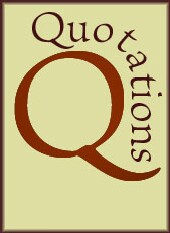

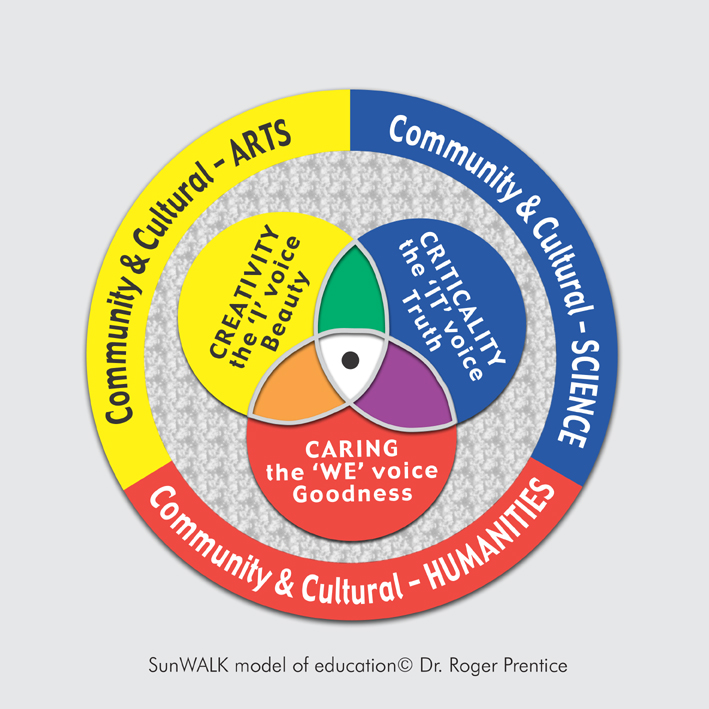
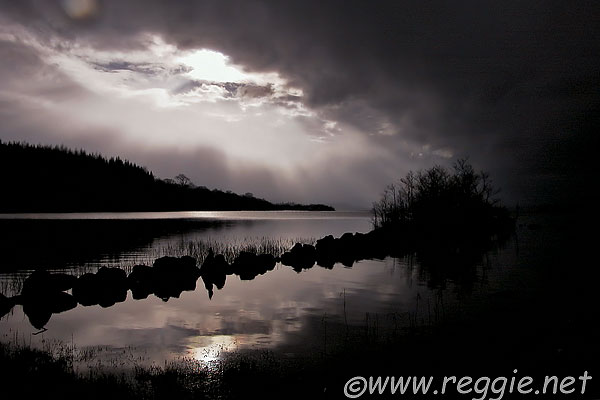 Source
Source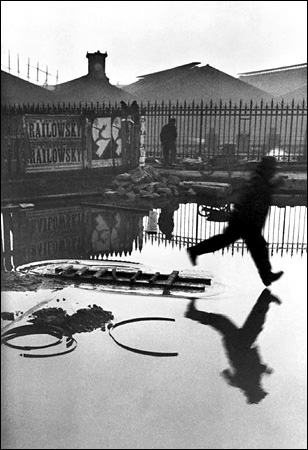
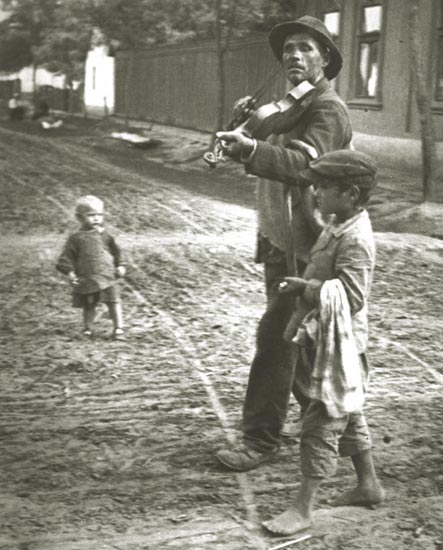
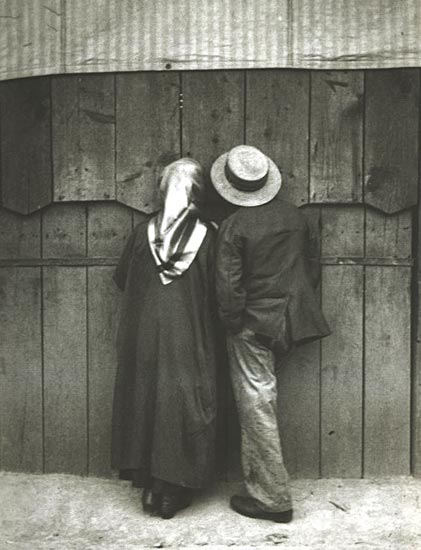

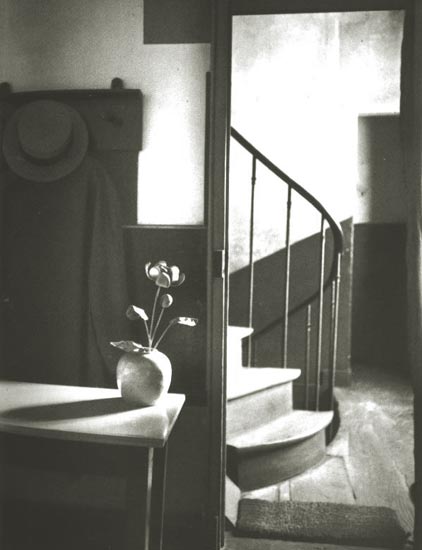
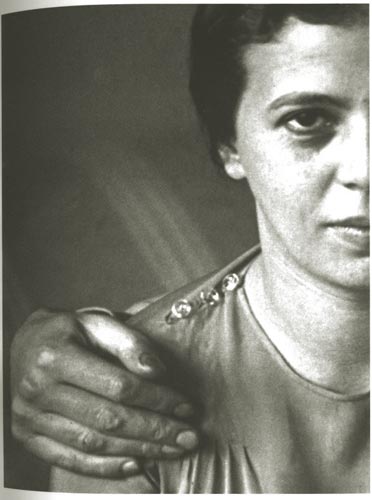
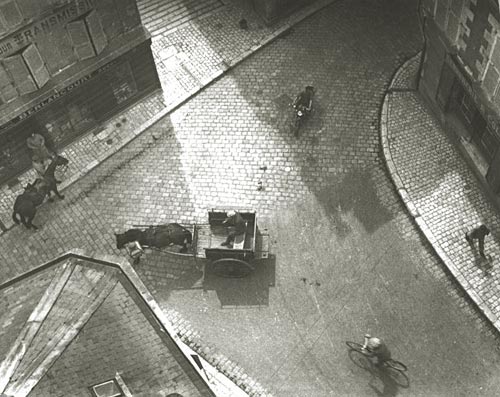
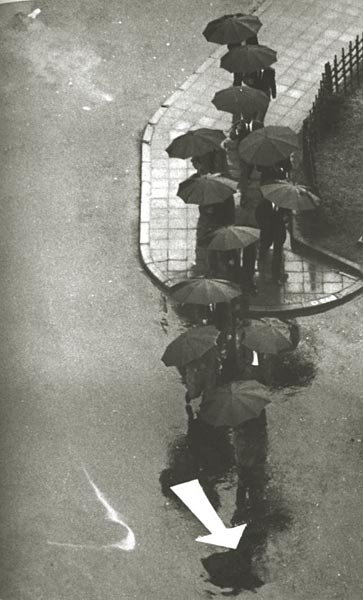
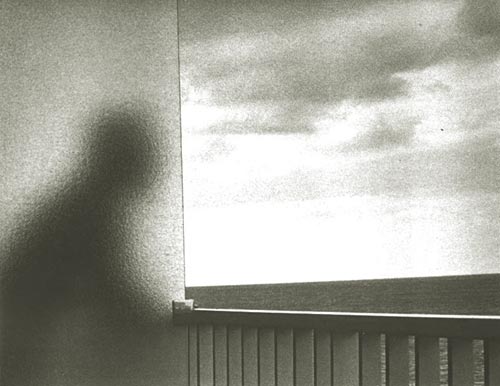
 Source
Source Source Wiki on Meditation
Source Wiki on Meditation Source
Source Source
Source




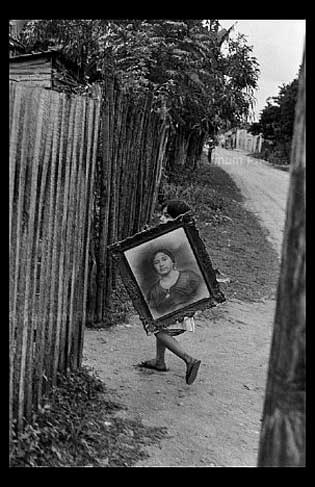 Source
Source
